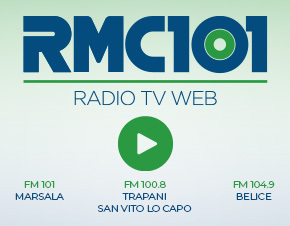In just a few years, Tunisia has transformed an inexistent crab industry, in a country with no tradition of crab consumption, into a thriving venture. The key factors? Adequate equipment, effective marketing, and adaptability. This remarkable feat was achieved with two invasive species of blue crab (Callinectes sapidus, an Atlantic species introduced to the Mediterranean through ballast water, and Portunus segnis, a tropical species that arrived via the Suez Canal) that began proliferating on Tunisia's shores in 2014. Today, these crabs have become a significant resource for Tunisian fishermen, leading to the coining of a new motto: "De l’horreur a l’or," or "From horror to gold."
The blue crab economy has now solidified, comprising a complete supply chain that provides employment for fishermen, women, transportation, logistics, processing companies, and merchants. Currently, 80% of fishermen employ crab pots (compared to the entire fleet using nets in 2014). A 12-meter vessel equipped with crab pots in Tunisia averages about 500 kg of blue crab per trip. The blue crab constitutes 25% of the country's fish exports, reaching 7,600 tons valued at 24 million dollars in 2021, a figure that doubled from 2020. The primary customer is the Asian market, with Italy, Spain, the United States, and Gulf countries following suit.
Initially, Tunisian fishermen aimed to eradicate the blue crab, viewing it as a menace rather than a resource. However, these very fishermen, along with researchers, NGOs, and authorities, now face concerns about overexploitation of the crab population. They are pondering how to manage blue crab fishing sustainably, ensuring it remains a "gold" asset for Tunisia.
Isabella Pratesi, Director of WWF Italy's Conservation Program, emphasized, "Today's Italy is Tunisia of 2014. Foreseeing what is happening today was possible, and a management approach with a genuine long-term vision, not myopic in the face of climate change, would have allowed us to be better prepared. We can still learn from our neighbors' experience, avoiding mistakes, such as the use of non-selective systems, especially near the coast, which could be fatal for our already severely depleted seas, impacted by human activities and climate change. We need to adopt a true adaptive management, learning how to manage new fishery resources like the blue crab, which can offer an alternative source of income for fishermen and all stakeholders in the industry."
The Mediterranean Sea is the most affected by the invasion of alien species, with approximately 986 species according to a list compiled by WWF in 2021, of which 10% are categorized as 'invasive,' meaning they pose potential threats to the economy and the environment. The only solution is, whenever possible, to adapt and turn this change into an opportunity.
WWF has documented this transformation in Tunisia through two videos, highlighting the paradigm shift that has taken place in the country. In 2014, a distressed fisherman was captured on film displaying a net completely destroyed and entangled with blue crabs. In 2023, appropriately equipped operators weigh and sort blue crabs in a highly organized supply chain. The blue crab explosion along the Tunisian coast began nine years ago, and now its population shows initial signs of decline, raising concerns among Tunisian fishermen and the entire supply chain that emerged from scratch to exploit and capitalize on this resource. Sassi Alaya, President of the "Groupement de Development de peche Al Ganouch," representing over 600 fishermen, narrates this journey.
Faced with the blue crab explosion, Tunisian fishermen devised specially modified crab pots to capture them. These are traps, a passive fishing system not dragged along the seabed, ensuring a more selective catch than nets. When properly managed, they have a reduced environmental impact. "The crab pots are the most effective solution: they are selective and more sustainable, only catching crabs without damaging the seabed or other species. And they are cost-effective for fishermen: a crab pot lasts at least two years, while a fishing net lasts a maximum of six months, because the blue crab destroys it, in addition to eating all the other captured fish," says Sassi Alaya.
The first step was training. Local community women, many of them fishermen's wives, were taught to construct the specific crab pots and to cook blue crab, with several tastings organized to showcase the variety of possible dishes. Simultaneously, fish processing companies were involved to test the potential for value addition of the blue crab. This led to a real boom; currently, Tunisia boasts 48 companies working on and exporting various finished products: whole cooked crab, shelled crab, crab meat. Sassi informs us that the sale of crab flour for compost production for plants and animal feed is also beginning, thanks to a donation from the United States-Tunisia cooperation for the purchase of compost production machines. Depending on the final product, blue crab is exported to the United States, Australia, Southeast Asia, and even Italy.
Greece and Spain have long faced the same problem, and in various areas, fishermen have adapted to crab fishing with pots. In the Ebro Delta, Spain, the blue crab commands an excellent economic value in the market thanks to an existing management plan that aims to maintain the balance between limiting the abundance of crabs in the water and ensuring fishermen's earnings. Since eradicating them is impossible, at least they derive a benefit.

 Sezioni
Sezioni




















